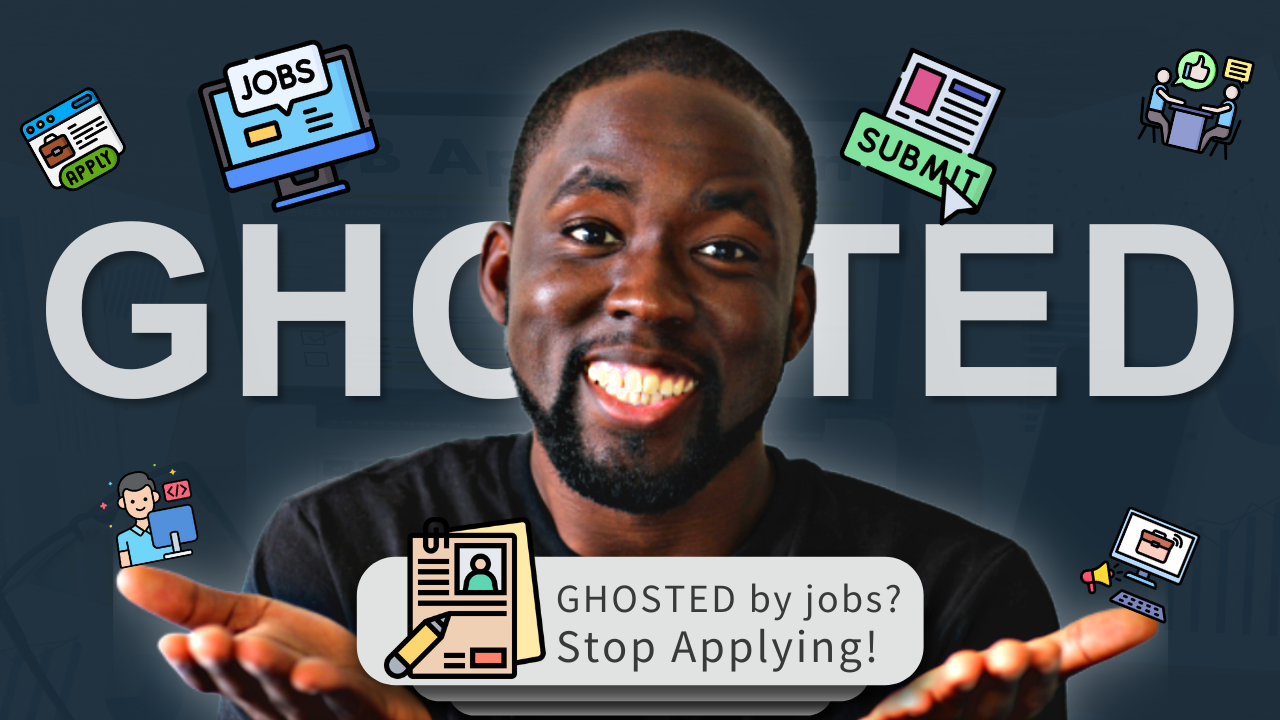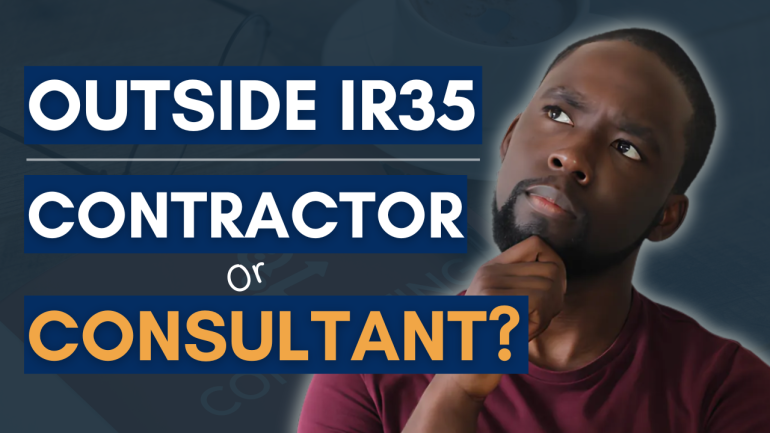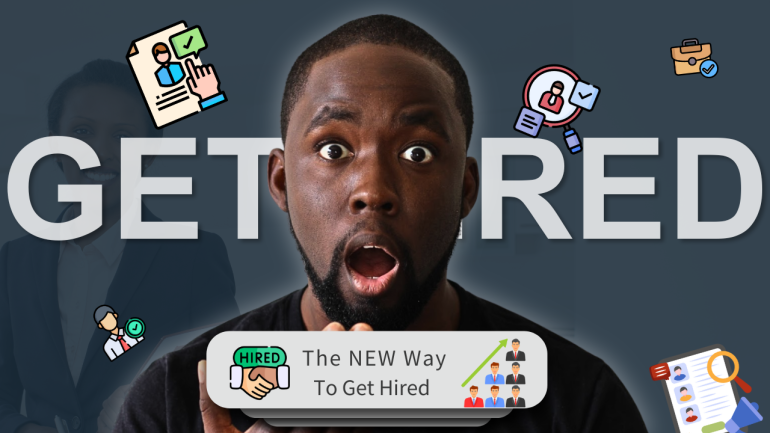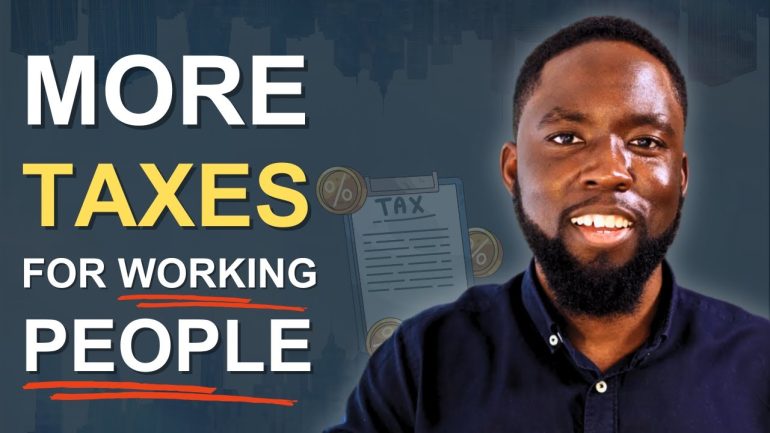Stop Applying for Jobs — Do This Instead
I’ve applied to hundreds of roles…
…And heard nothing back.
If that resonates with you, you’re not alone. And more importantly, you’re not doing anything wrong. But you may be doing something outdated.
Let’s be honest. The way we’ve been taught to find work doesn’t reflect today’s reality. The game has changed. And if you’re still playing by the old rules, you’re likely feeling invisible.
This isn’t just about finding work. This is about taking ownership of your career, leveraging relationships, and building a path that reflects your skills, values, and ambition.
In this article, I’ll share how I’ve navigated this space as a consultant and contractor. You’ll find practical strategies, personal examples, and real talk about what works in this market.
The Problem: A Saturated Market and Radio Silence
Over 55% of CVs submitted online never reach a human being. That’s due to applicant tracking systems (ATSs) filtering out submissions before hiring managers even see them. Unless your CV is keyword-aligned and structured with clarity, it likely never sees the light of day.
And the impact is deep. Forty-one percent of job seekers say they’ve lost confidence as a result of constant rejection or silence. It’s easy to feel defeated, especially when you’re investing time and effort that leads to nothing.
Some applicants are sending out a thousand CVs over a few weeks. That’s not a job search. That’s a recipe for burnout.
But despite the noise and the overwhelm, opportunity still exists. It just lives in a different place.
From Job Seeker to Job Architect
When I entered the contracting world in 2021, I wasn’t just after more money. I wanted freedom. I needed to operate on my terms, work with purpose, and get properly paid for my value.
My first contract came through someone I didn’t know well at the time, introduced through a friend. That conversation opened the door. I delivered, built a relationship, and ended up working with that client across multiple projects.
Later contracts came through referrals, LinkedIn connections, and even job boards, but what stood out was the pattern. The roles that moved my career forward were the ones that came through relationships and reputation, not cold applications.
This is the difference between reacting to the market and actively designing your path.
Strategy 1: Build Your Power Circle
Networking isn’t about collecting names. It’s about creating meaningful, trusted relationships with people who know what you do and why you matter.
You’ve heard me say it: Understand. Reach. Expand.
Understand:
Start with your existing network. Think beyond LinkedIn, who do you know? Who do they know? Your first, second, and even third-degree connections matter more than you think.
Start by asking for example:
“Do you know anyone in the programme management or digital transformation space I could speak to?”
Most people won’t mind making a warm introduction. They just need to be asked.
Reach:
Connect intentionally. Here’s a message I’ve used successfully:
“Hi [Name], I’m exploring new opportunities in the programme management space and wanted to know if you’re open to a quick chat about your work?”
This can lead to sit-downs with recruiters, engagement leads, or hiring managers, people who can help you get seen.
Expand:
Track everything. Set up a simple CRM in Google Sheets to log names, companies, dates, and notes. Aim to speak to five people a week, follow up, and a build rhythm. This creates momentum and gives you direction, especially in unpredictable markets.
Strategy 2: Shape a Personal Brand That Reflects You
People don’t just hire skills. They hire stories and trust.
Your CV, LinkedIn profile, and online presence should reflect a consistent message. One that clearly explains who you are, what you do well, and the value you bring.
Make sure your CV follows the Problem → Action → Result format.
Here’s an example I’ve used:
Problem: Delayed delivery of a multi-workstream programme
Action: Introduced MSP-based governance and stakeholder cadence
Result: Delivered key milestones three months early, saving £250,000
This isn’t about overselling. It’s about being clear and compelling.
Align your LinkedIn with your CV. Ensure your summary tells your story and includes a one-liner about what you help people do.
Something like:
“I help organisations become more efficient through strategic digital transformation.”
Your experience should reinforce that message, and your online footprint should match. Google yourself, what shows up?
Strategy 3: Use AI as a Support Tool, Not a Shortcut
AI is powerful. But only if used wisely.
I regularly use tools like ChatGPT and Gemini to help with drafting bullet points, structuring CVs, and preparing for interviews. But I never let them speak for me.
AI can give you a first draft. Your job is to make it yours. Read every line, edit for tone, accuracy, and relevance.
If you copy and paste generic AI outputs, you’ll get caught. Hiring managers can spot a lack of authenticity a mile away.
Use AI to:
- Generate structure and suggestions
- Simulate interview questions
- Identify areas to improve
But always bring your voice, your experience, and your nuance into the process.
Strategy 4: Use Job Boards the Right Way
I’ve landed roles via job boards, but only by playing strategically.
In one case, I used CV Library’s paid promotion tool and had a strong, well-positioned CV uploaded. When recruiters saw my profile, they contacted me directly.
If you’re going to use job boards:
- Invest in visibility
- Follow up with human conversations
- Treat it as one part of your approach, not the whole strategy
Bonus: Create a Presence That Attracts Work
It’s one thing to chase opportunities. It’s another to attract them.
When you post content, engage thoughtfully, and comment on relevant conversations, people start noticing. I’ve had clients and recruiters message me months after initial interactions because they remembered something I said or a post I shared.
Being consistent with your message builds recognition and trust over time.
Try this:
- Like and comment on posts in your niche
- Share short reflections on recent projects or lessons learned
- Reach out to people with sincere appreciation, not sales tactics
If you genuinely want to be in their world, let them know. Most people are open to sharing.
And before the conversation ends, ask:
“Is there one person you think I should connect with?”
That one question can create ripple effects.
Final Thoughts
If you’re tired of the noise, the ghosting, and the grind, it might be time to stop applying and start architecting.
You don’t need a hundred applications a week.
You need a few strong relationships and a clear message.
You need to show up consistently and intentionally.
And you need to believe that opportunity exists, even if it doesn’t look like what you expected.
Ask yourself:
- What value am I offering?
- Who needs to know this?
- How can I position myself to be found?
Because when you do that, work becomes less about chasing and more about choosing.
Understand. Reach. Expand.
Peace.







